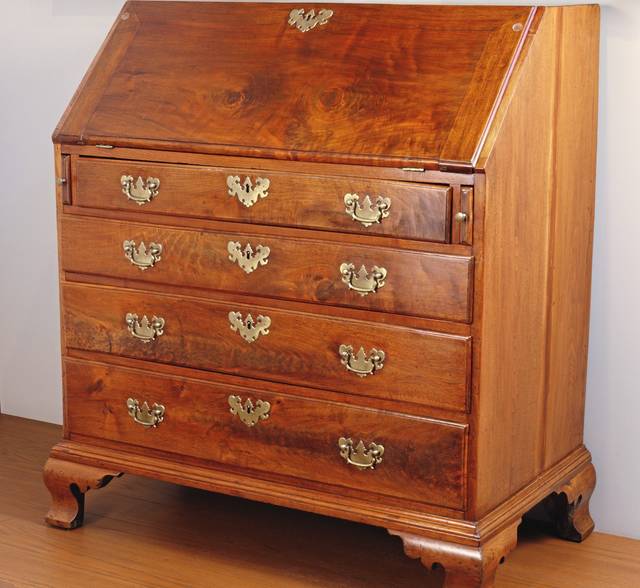How much can you say about a desk? Pittsburgh-based designer Tony Allgeier can go on for at least 30 minutes.
Granted, it’s not just any desk — it’s an 18th-century Chippendale mahogany slant-front desk that he’ll be examining during an online “For the Love of Furniture” program at 7 p.m. Dec. 30.
The half-hour video and live Q-and-A session is the second in an every-other-month series focusing on furniture pieces from the permanent collection of The Westmoreland Museum of American Art.
“The whole premise is going piece by piece and going into depth about each piece,” Allgeier said. “When you think about museum pieces, you think of painting and sculpture, which were created to be showcased, to be seen. With furniture, it was created to be showcased and also to be utilized.”
Allgeier will talk about the desk, built around 1765, in terms of construction and design, its place in history and, of course, its designer — Thomas Chippendale, the famed 18th-century English cabinetmaker whose renowned work represents the Anglicized Rococo style.
“At the end, we’ll actually open it and see what’s inside,” Allgeier said. “When the top is flipped down, there’s so much intricate detail in the interior.
“At 300 years old, it’s amazing. It’s a piece of wood that has stood the test of time and still can function,” he said.
If the name Chippendale brings to mind the Los Angeles club and the troupe of male dancers it spawned, Allgeier said he has that covered.
“I actually do chat a little about the Chippendales dancers and the club,” he said. “The original club was all about luxury and class, and it was inspired by Chippendale.”
And if you wonder why a museum of American art is focusing on an English craftsman, Allgeier can explain that, too.
“Chippendale was the first furniture designer to create a catalog of all his pieces,” he said. “It’s been verified that (the desk) was created in America under Chippendale’s direction and style.”
The Westmoreland debuted the furniture series in October, with Allgeier examining a Victorian-era sofa from the collection. Pieces for the February and April sessions have yet to be chosen, he said.
“In a broad sense, furniture is a unique thing,” he said. “As a designer, your primary focus is on aesthetics and function. You can have a gorgeous-looking piece, but if it doesn’t function, you’ve kind of missed the mark.
“The Westmoreland really does have a very good collection, and this is something I’m really excited to do.”
“For the Love of Furniture” is available on a “pay-what-you-can” basis. The program link will be provided after registration at thewestmoreland.org.








